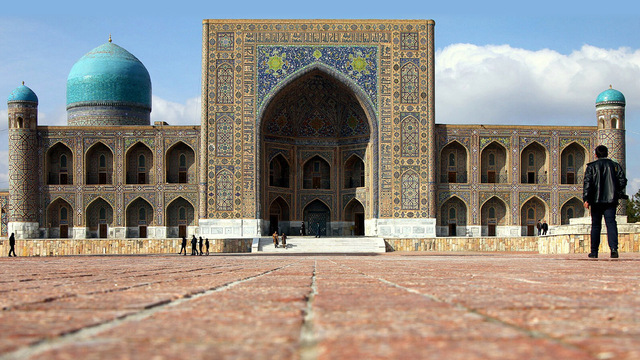 Samarkand is most noted for its central position on the Silk Road, and for being an Islamic center for scholarly study
Samarkand is most noted for its central position on the Silk Road, and for being an Islamic center for scholarly study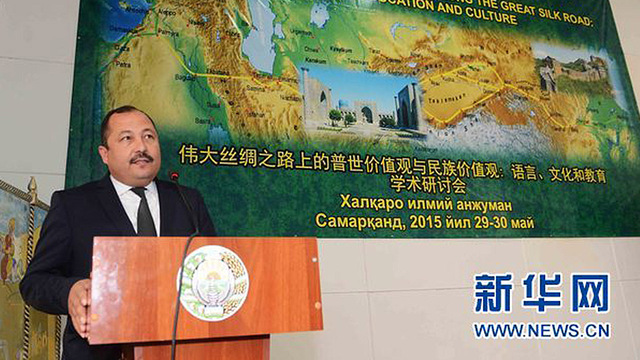 "The Silk has boosted the exchange of different cultures, languages and national values and further formed the universal values along the road."
"The Silk has boosted the exchange of different cultures, languages and national values and further formed the universal values along the road."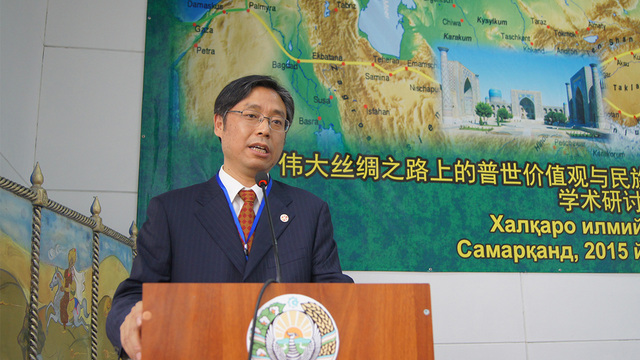 “SISU will start Uzbek courses this year, and further works with SSIFL to develop the Confucius Institute in Samarkand.”
“SISU will start Uzbek courses this year, and further works with SSIFL to develop the Confucius Institute in Samarkand.”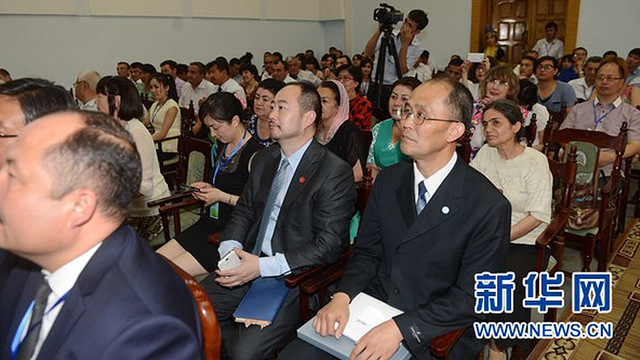 With the strategic conception of “One Belt and One Road” , countries along the road should communicate more to use the legacy.
With the strategic conception of “One Belt and One Road” , countries along the road should communicate more to use the legacy.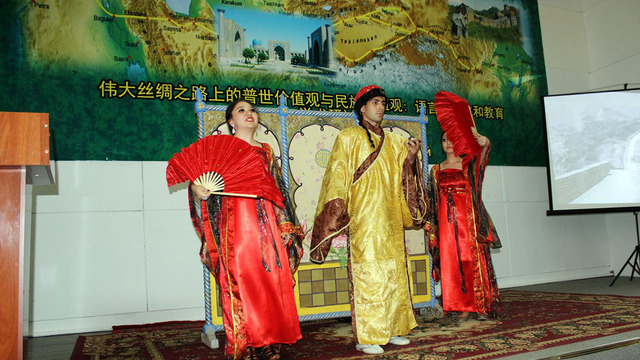 The Uzbek language is the only official state language, and since 1992 is officially written in the Latin alphabet.
The Uzbek language is the only official state language, and since 1992 is officially written in the Latin alphabet.SISU will offer Uzbek courses this year and further enhance Sino-Uzbekistan educational and cultural communication through the Confucius Institute in Samarkand, according to Jiang Feng, Chair of the University Council of Shanghai International Studies University (SISU), at the conferenceheld late May by Samarkand State Institute of Foreign Languages (SSIFL).
The conference centered on the topic: universal and national values on the great Silk Road: language, education and culture, and invited scholars from SISU, Tashkent State Institute of Oriental Studies,Kazakhstan and South Korea to discuss about reviving the Silk Road and promoting linguistic and educational corporation.
“The Silk Road contacts dozens of countries and has boosted the exchange of different cultures, languages and national values and further formed the universal values along the road. Now, it’s time to revive it,” said Rakhimov, the president of SSIFL.
SSIFL and SISU have already worked together to facilitate Sino-Uzbekistan corporations, such as establishing the Confucius Institute in SSIFL, expanding educational exchange programs and many other research projects, according to Rakhimov.
He added that this conference is a platform for academic communication that provided more opportunities to linguistic, historical and other cultural studies.
Jiang Feng said that the Silk Road was once an economic artery between the Eastern and Western world, and Samarkand, like the pearl on this road, witnessed the emergence of different cultures. The Silk road introduced Chinese civilization to the central and western parts of Eurasia, while brought Islamic and Christian civilization to China.
As one of the most developed cities in China, Shanghai highly values inter-university communications. According to Jiang, SISU fully supports any kind of academic corporations, scholar exchange programs and research projects with SSIFL.
“SISU will start Uzbek courses this year, and further works with SSIFL to develop the Confucius Institute in Samarkand,” Jiang said.
Professor Khashimov from SSIFL said that the legacy of the Silk Road hasn’t been fully used yet. It’s the communication along the road that preserves the Karez, an irrigation system of wells connected by underground channels. With the strategic conception of “One Belt and One Road” , countries along the road should communicate more to use the legacy.
The initiative of “One Belt and One Road” is crafted to advance corporations along the Silk Road Economic Belt and 21st Century Maritime Silk Road. The economic belt is to promote connections among Central Asia, Eastern Europe and China, while the maritime road aims at further bringing the economies in South and Southeastern Asia as well as Africa together.



